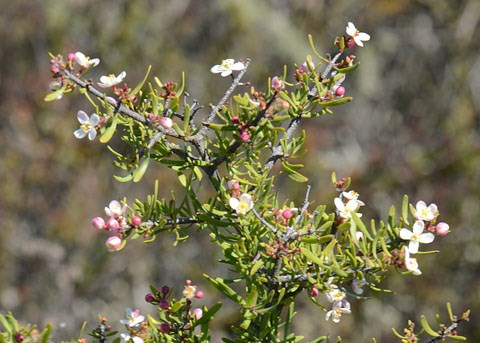Native Plant Species at Cabrillo National MonumentCabrillo National Monument is home to a diverse array of native plant species that thrive in its unique Mediterranean ecosystem. From the coastal bluffs to the inland chaparral, these plants have adapted to the region's warm, dry summers and cool, wet winters. The native vegetation includes a variety of species that contribute to the ecological richness and biodiversity of the park, providing essential habitat and resources for local wildlife. Visitors to Cabrillo can explore these fascinating plant communities and learn about their important roles in maintaining the health and resilience of the ecosystem. Discover the remarkable adaptations of these plants and their contributions to the natural heritage of Cabrillo National Monument. 
NPS Photo Shaw's Agave (Agave shawii)Shaw’s agave is a very rare plant, with its U.S. population historically limited to the extreme south of California. Currently, Cabrillo National Monument and the surrounding Navy property on the Point Loma peninsula host the largest populations of Shaw’s agave in the entire United States. This agave species thrives in coastal areas, where it benefits from buffered temperatures and fog moisture. While Shaw’s agave is found in larger numbers along the coast of Baja California, there are few protected areas along the Baja coast to safeguard it from development. At Cabrillo National Monument, ongoing restoration efforts for Shaw’s agave include pollination experiments, soil measurements, and greenhouse propagation to support and expand this rare plant's population. These efforts are crucial for preserving the unique biodiversity of the region and ensuring the survival of this distinctive species. PhotographA thriving Shaw’s agave (Agave shawii) at Cabrillo National Monument, showcasing its distinctive thick, spiky leaves and a tall flowering stalk. This rare plant species benefits from the coastal climate, with buffered temperatures and fog moisture, and is part of ongoing restoration efforts in the park. In the background, more Shaw’s agave plants can be seen, illustrating the significance of the Point Loma peninsula as a critical habitat for this unique agave species. 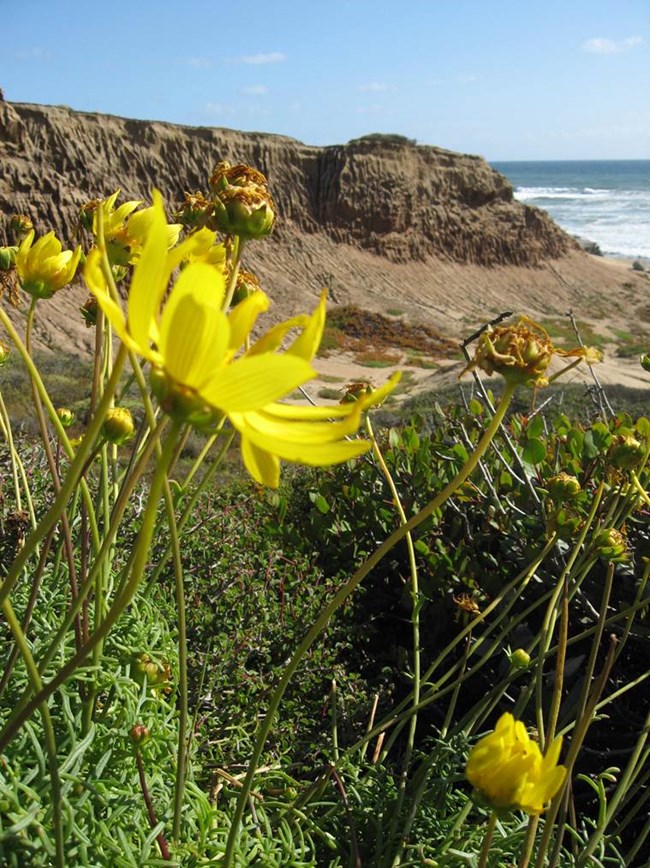
NPS photo. Sea Dahlia (Leptosyne maritima)The Sea Dahlia is another rare California plant that can be found throughout Cabrillo National Monument. This vibrant plant is most commonly seen along the tidepool trails but can also be found in the shaded understory near the Old Lighthouse. Like many plants at Cabrillo National Monument, the Sea Dahlia is threatened due to the development of its rare and unique coastal sage scrub habitat. The Sea Dahlia is particularly notable for its very large yellow blooms, which are most common in the spring, adding a splash of color to the park's landscape. PhotographBright yellow blooms of the rare Sea Dahlia (Leptosyne maritima) adorn the landscape along the tidepool trails at Cabrillo National Monument. This beautiful plant, which thrives in the park's unique coastal sage scrub habitat, is most commonly seen in spring. The rugged coastline in the background highlights the Sea Dahlia's resilient nature amidst the challenges of habitat development. 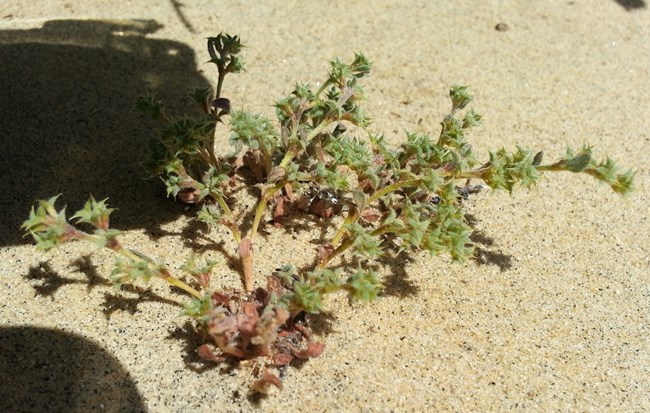
NPS photo San Diego Spineflower (Chorizanthe orcuttiana)The San Diego spineflower, also known as Orcutt’s spineflower, is a federally listed endangered species that is endemic to San Diego County. Once thought to be extinct, this rare plant was rediscovered on Point Loma a few years ago. Today, there are a few small populations known throughout San Diego. Researchers are actively working to plant seeds in areas of the park that have suitable soil properties and compatible plant species. These efforts aim to support and expand the populations of the San Diego spineflower, helping to ensure its survival in its natural habitat. PhotographA rare San Diego spineflower (Chorizanthe orcuttiana) growing in its natural sandy habitat at Cabrillo National Monument. Once thought to be extinct, this federally endangered species was rediscovered on Point Loma and now has a few small populations throughout San Diego. Researchers are working to support its growth by planting seeds in suitable areas within the park.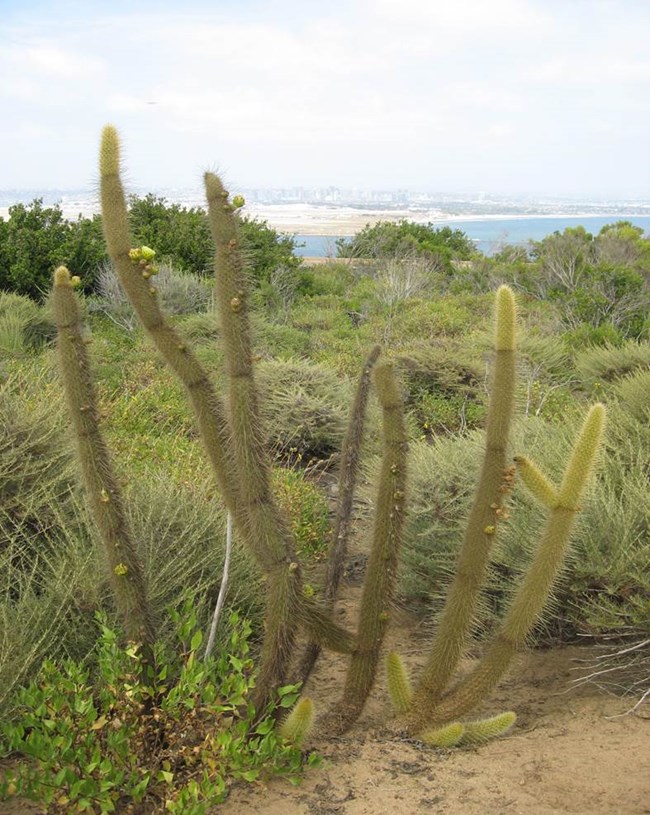
NPS photo. Golden Club Cactus (Bergerocactus emoryi)The Golden Club Cactus is a rare and threatened species locally but is found in abundance in Baja California. This cactus gets its name from the fuzzy golden spines, which are actually highly modified leaves, covering its tall cylindrical stems. Cabrillo National Monument is home to one of the largest known populations of this rare species. Visitors can spot the Golden Club Cactus on the slopes below the Wedding Bluffs on the west side of the Old Lighthouse. PhotographThe rare Golden Club Cactus (Bergerocactus emoryi) thrives on the slopes below the Wedding Bluffs at Cabrillo National Monument. Its tall cylindrical stems are covered in fuzzy golden spines, which are actually highly modified leaves. This unique species, threatened locally, is found in abundance south of the border in Baja California. Cabrillo National Monument boasts one of the largest known populations of the Golden Club Cactus in the United States.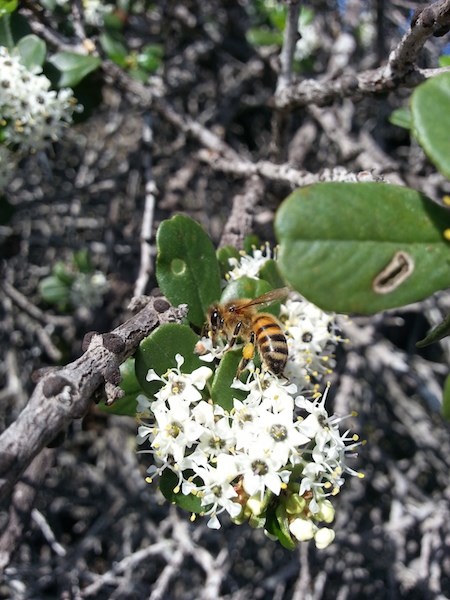
NPS photo Coast Lilac (Ceanothus verrucosus)The Coast Lilac, also known as the Warty Stem Lilac, is a rare species named for the bumpy stipules along its stem. This plant thrives in coastal climates and produces many beautiful and fragrant small white flowers with purple nectaries in winter and early spring. These blooms attract numerous native bee species, essential for the plant's pollination. The reproductive success of the Coast Lilac is closely tied to natural wildfire patterns, which play a crucial role in its life cycle. However, natural wildfires are often suppressed before they can spread on the Point Loma peninsula, potentially affecting the future of this rare species. Park researchers are studying the impacts of reduced wildfire occurrences on the Coast Lilac. Despite these challenges, the Coast Lilac is a very long-lived species, with individuals surviving for several hundred years. This longevity provides a buffer period during which restoration efforts can be implemented to ensure the continued presence of this unique plant at Cabrillo National Monument. PhotographA native bee pollinates the fragrant white flowers of the Coast Lilac (Ceanothus verrucosus) at Cabrillo National Monument. This rare species, also known as the Warty Stem Lilac, thrives in coastal climates and blooms in winter and early spring, attracting numerous pollinators. The long-lived Coast Lilac is crucial to the local ecosystem, and ongoing research and restoration efforts aim to ensure its survival amidst changing wildfire patterns. 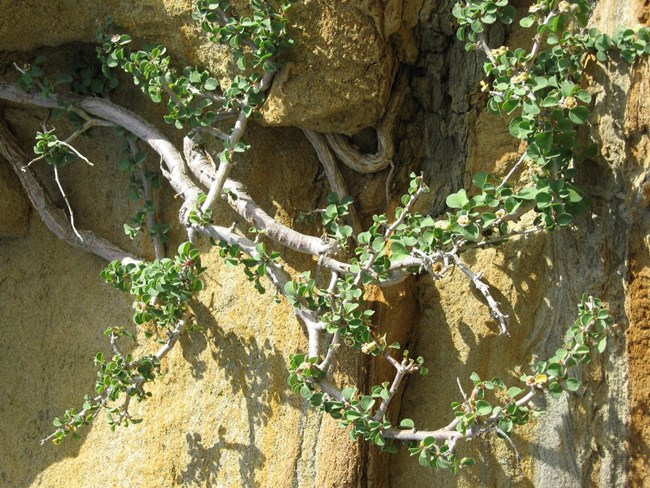
NPS photo Cliff Spurge (Euphorbia misera)Cliff Spurge is a locally rare and endangered succulent species, with its distribution mostly localized to coastal San Diego. However, at Cabrillo National Monument, this plant can be found in almost all areas of the park. When damaged, all parts of the Cliff Spurge produce a milky secretion that can cause rashes upon direct contact with skin. Despite its rarity, Cliff Spurge boasts one of the largest blooming seasons of all plants at the park, with blooms rapidly following most rain events. The flowering structures are very small but quite pretty when viewed up close, adding a delicate beauty to the rugged landscape.
|
Last updated: July 24, 2024

